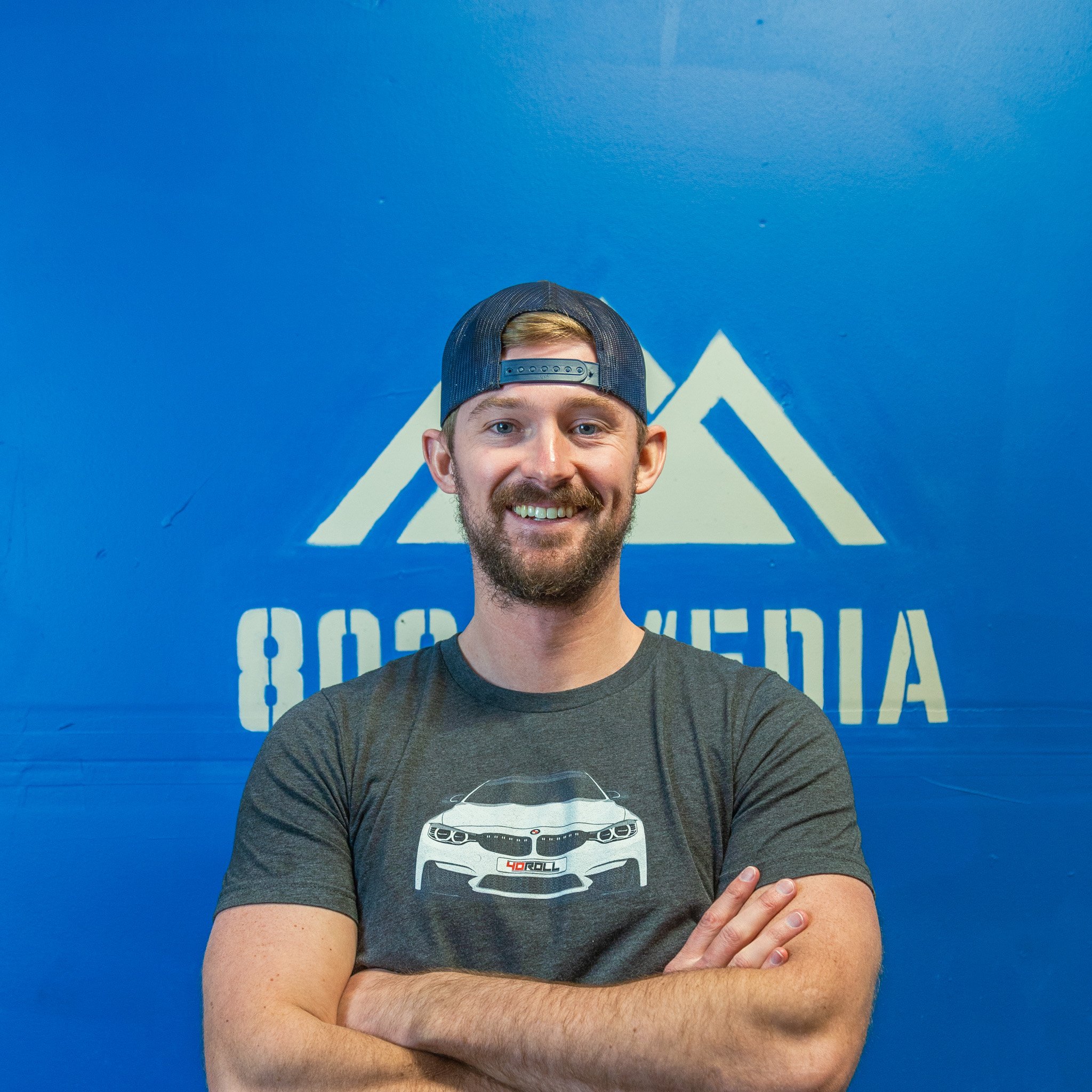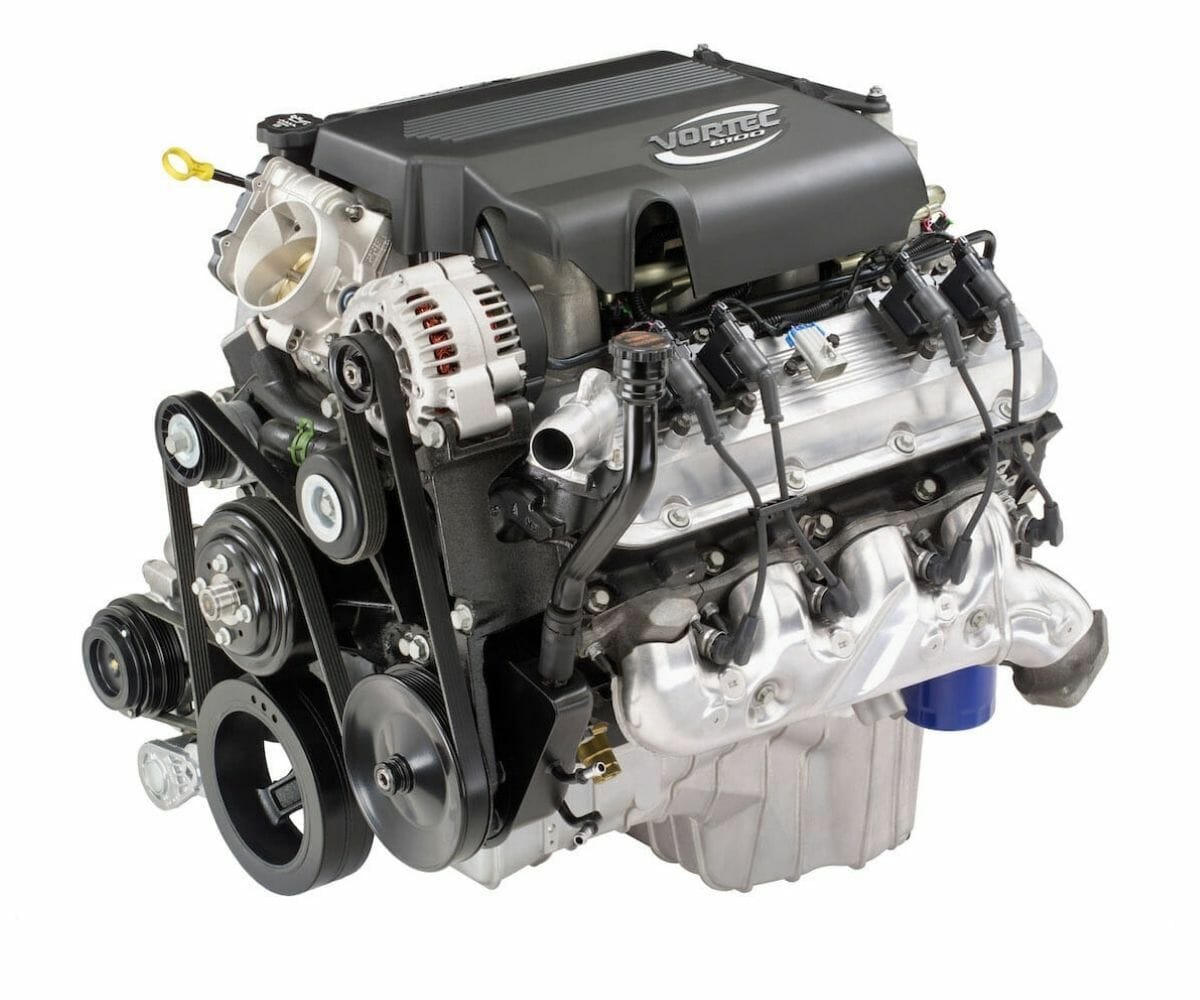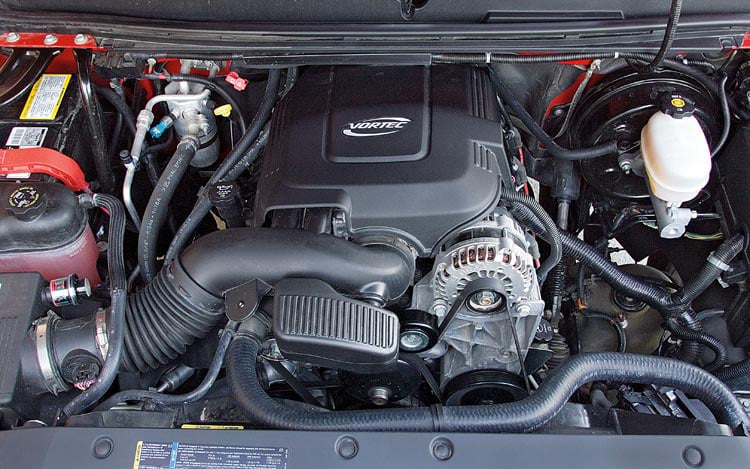Chevy 8.1 Vortec Ultimate Engine Guide

Meet Jake
Jake is a founder of 8020 Media and has been creating automotive content online since 2017. He has been the lead writer for Chevy Trucks and has transformed it from the old and outdated site it was into what it is today. Jake creates a ton of GM related content for the 8020 Media YouTube channel and specializes in Duramax and Vortec information but has a wealth of knowledge across all GM cars and engines. Jake believes the L5P is the best diesel on the market today.
The 8.1 Vortec was the last big-block engine to be manufactured by GM. It is a staple of GM’s LS-based engine platform and continues to be a popular engine today.
This guide is going to cover the history of the engine, specs, common problems, performance upgrades, and a handful of frequently asked questions and other helpful information.
History
Released in 2001 the 8.1L Vortec was the biggest and last of the GM big-blocks to be produced. It replaced the 7.4 Vortec and was around until 2006 when it was phased out in favor of the smaller and more fuel efficient Vortec engines.
The big-block was built off of the GM 454 engine platform, also known as the 7.4 Vortec. It was produced as a gas alternative to the new Duramax LB7 diesel, offering a high-torque gas engine capable of towing just about anything. The engine was produced to compete with Dodge’s 8.1 Magnum V10, and Ford’s V10 Triton engines of the time.
The big 496 cubic inch 8.1L engine produced 340hp and 455lb-ft. of torque in truck applications but was capable of a lot more. While it was predominantly used in the 2500HD/3500HD trucks and suburbans it was also used in a number of commercial trucks, industrial vehicles, and RV’s. Additionally, Navistar built a marine version that produced 550hp and 690lb-ft. of torque.

What Vehicles Use this Engine?
The only variant of the engine was the L18. It was used in the 2500 and 3500 HD trucks and vans produced by Chevy and GMC from 2001-2006. Furthermore, it was used as a boat engine and as a RV and motorhome engine until 2009.
2001-2006:
- Silverado 2500HD and 3500HD
- Sierra 2500HD and 3500HD
- Chevy Suburban 2500
- GMC Yukon 2500
- Chevy Express and Avalanche
- Chevy Kodiak
2001-2009:
- Malibu and MasterCraft boats (engine made by Navistar)
- Various RV’s and motorhomes
Engine Specs
Built off of the previous 454 engine, the new platform received a stroke increase which increased the displacement to 8.1L. Additionally, it received new intake ports and a new head design. Fueling is driven by sequential multi-port fuel injection. It is a 16-valve pushrod overhead valve configuration. Both the head and block are made of cast-iron. Power was put to the ground either with an Allison 1000 transmission or a ZF 6-speed. The Yukon and Suburban models were only available with an automatic 4-speed 4L85E transmission.
| Production | 2001-2009 |
| Displacement | 8.1L, 496 cu. In. |
| Aspiration | Naturally aspirated |
| Horsepower | 320-340hp |
| Torque | 440-455 lb. ft. |
| Bore | 4.25 in. |
| Stroke | 4.37 in. |
| Block | Cast iron |
| Head | Cast iron |
| Firing Order | 1-8-7-2-6-5-4-3 |
| Fueling | Sequential multi-oort |
| Compression | 9.1:1 |
| Valvetrain | 16-valve, OHV |
| Oil Capacity | 6.5 quarts |
| Redline | 5,000 rpm |
8.1 Vortec Common Problems & Reliability
While the Vortec 8100 is a beast of an engine, it did have a number of common problems. The majority of these problems are small in nature and none are really very alarming or catastrophic. We have a complete guide on engine problems if you are looking for more detail than we provide here.
With the majority of the common problems being pretty small and simple fixes, the 8.1 is considered extremely reliable. It is almost bulletproof and usually doesn’t have any issues seeing upwards of 300,000 miles.
These engines are underpowered compared to how much horsepower they can handle, which is part of what adds to their longevity. The stock block, head, and all the internals are very strong and unlikely to have any major issues at stock power levels.
Here are the common problems, with more details to follow below:
- Crank Position Sensor
- Intake Manifold Gaskets
- Lifter Tick
- Spark Plugs
- Oil Consumption
If you would rather consume this content via a video, check out our Chevrolet 8.1 Vortec Common Problems video below:
1) Crank Position Sensor Failure
The most common issue on the 8.1L Vortec is the crankshaft position sensor. The sensor fails frequently which causes it to send bad readings to the ECU, which results in the timing being thrown out of whack.
The result of a bad CPS is very poor performance, rough idling and frequent engine stalls, and issues with no-starts. This problem is most common on 2001-2003 models as it was subsequently fixed by GM with a better sensor design.
2) Intake Manifold Gasket Leaks
The intake manifold gaskets are prone to failure which creates an air leak, also known as a vacuum leak, which allows air to seep out of the intake tract before entering the cylinders.
This will cause the engine to run poorly, idle rough, and create a lack of acceleration and power. Also, you might notice a whistling noise from the engine. This will also throw check engine lights, usually with a P1174 or P1175 engine code, which are the codes for rich and lean AFRs.
3) Lifter Tick
The lifters on this engine are prone to developing lifter tick, caused by a buildup of oil deposits around the lifters.
While the noise might be annoying and not ideal, it usually isn’t harmful at all. You might be able to fix the issue by running a few cans of Seafoam or Marvel Mystery Oil through the gas tank.
4) Spark Plug Failure
Another aftermath of the excess oil consumption issues is failed spark plugs. Spark plugs usually need to be replaced every 25,000 miles on this engine. The oil consumption can foul the plugs as some excess oil typically contaminates the plugs. Some engines have more oil consumption than others which can cause the spark plugs to fail even more frequently.
5) Excess Oil Consumption
The last “problem” with the 8.1 Vortec is oil consumption. These engines are known to consume about 1 quart of oil every 2,000 to 5,000 miles. There really isn’t a big issue with this, just make sure you always keep it topped up on oil and keep a quart or two in the truck in case you need to fill-up on the road. The only real problem this causes is spark plug failure and lifter tick which aren’t really major issues. Therefore, oil consumption isn’t something to worry about despite it being somewhat frustrating from time to time.
Poor Gas Mileage
The 8.1 Vortec averages about 12-14mpg on the highway and 7-9mpg in the city. Combined driving results in about 10mpg. While the engine is a beast and extremely reliable, the fuel economy is one of its biggest downsides, especially for towing.
Comparably, the Duramax LB7 averages about 18mpg combined and the LLY gets about 20mpg combined. So the Vortec is a big downgrade over the Duramax when it comes to fuel economy.
Best 8.1 Vortec Performance Upgrades
Since the 8.1 is capable of handling a good bit more power than it came with from the factory, there is some decent potential with performance upgrades. A version of the engine made 550hp and 690lb-ft. of torque on the same block, head, and internals as the truck/SUV engines.
If you have $10k+ to spend you can easily take this platform into 1000whp+ territory. However, you will lose a lot of street-ability with a setup like this so this is most frequently reserved for those building drag cars. With that being said, some basic bolt-ons can add decent power. If you want to take the truck to the next level without fully sending it you can look into turbo and supercharger upgrades which can get you around 600whp and 700wtq without requiring a big investment.
Best Basic Bolt-Ons
- ECU tuning
- Long-tube headers
- Exhaust
- Intake
More Advanced Mods
- Supercharger
- Turbocharger
- Blower
- Cams
- High flow heads
- Stroker kits
The stock block, crank, and internals are good for about 1000whp. So, these engines can really handle as much horsepower as you can afford to buy. Pushing those levels is of course very expensive, so I’m going to focus on the more basic and practical upgrades.
Sticking to basic bolt ons like tuning, headers, exhaust, and intake should be good to get you around the 400whp mark. For more extensive information checkout our Best 8.1 Vortec Mods guide.
Supercharger Upgrades
While turbocharging is a bit more popular on the Chevy 8.1, there are a number of supercharger kits out there as well. Raylar offers a 2.9L twin-screw supercharger kit. The kit runs about $8k without tuning or fuel pump upgrades.
The supercharger kit will give you around 600whp and 700lb-ft. of torque. However, there are a number of additional upgrades available like stroker kits and high-flow heads that can boost these power levels even further.
Ultimately, supercharging is a great option to create a high-horsepower streetable truck. Albeit, the entry cost is a bit steep for a 20-year old engine.
Turbocharger Upgrades
The more popular alternative to a supercharger kit is a turbocharger. Which is best for you really depends on your power goals and what you plan on using the truck for. But turbochargers can be a bit less expensive way to enter into high-horsepower levels.
Turbo kits usually run anywhere from $4k to $8k, depending on power levels and the setup. Turbo’ing the vortec is a popular route to go so there is a wealth of information on the forums and plenty of performance brands who support this platform, making this a good route for anyone looking for 600whp+.
Engine Swaps
While the 8.1 Vortec can make big power, it isn’t the most desirable engine for swaps. The 8.1 is really heavy at just above 750lbs. which is really heavy for non-truck swaps. It is used in some drag cars and race applications, but it generally isn’t a popular engine for street swaps.
The LS engines are more favorable over the 8.1 due to their size, weight, and aftermarket support. While it has some okay aftermarket support, making power is a lot more expensive than it is on the LS platforms, and there is a lot more support from tuners and performance brands for LS engines which makes it more affordable and easy to mod.
The Vortec 8100 was built to be a work truck engine with great reliability and towing capacity. It wasn’t necessarily designed to be a high-performance engine like the LS engines are, so the LS is a better option for performance applications. If you are looking for reliability and towing, then the 8.1 can be enticing, but it’s just too expensive and heavy to consider for performance swaps when the alternative is an LS.
The firing order of the GM 8.1 V8 is 1-8-7-2-6-5-4-3.
The engine holds 6.5 quarts of oil. The owners manual calls for 5W30 or 10W30 engine oil. Running 5W40 is common and is said to help reduce oil consumption compared to running the thinner oils.
Consensus among owners and performance enthusiasts is that the Allison 1000 is the best transmission for the 8.1 Vortec. It can handle the most power and therefore doesn’t need to be built out as soon as the other transmission for high-horsepower applications. The other transmission options were the ZF 6-speed manual and 4-speed auto 4L85E.







Jake what do you think of a engine swap for a 2000 chevy c/ 2500 from a 5.7 to a 8.1 with a Allison 4L80E trans I want power , torque and speed is this the right swap oh yah duriblity too all for $4357.00 engine and trans
Hello ,I,am interested in minor performance gains .I have been happy with my truck for the past twenty years and more. I use the truck for towing my show cars from state to state. would headers do many any good ? Maybe some tuning ? Also a problem with a miss under load after installing new plugs, wires, coils , map censer , throttle body and crank censer again over the past year. Code PO300 random misfire. 170,000 miles .O2 censer ? intake gasket ? new injectors? Appreciate any information.
In the process of replacing cats (stolen) they are asking for the engine family. Does anyone have a clue.?
Mike – it is part of GM’s 90-degree V8 big block engine family, gen 7. It gets the Vortec nomenclature but most Vortec’s are part of the small-block engine series. With that being said, I don’t know why they would need to know what engine family it is – there is not other 8.1L.
MY 8.1 LITER , 2002 IS IN MY JAYCO MOTOR HOME. IT HAS DEVELOPED A MISS AND MINOR BACKFIRE WHEN ACCELERATING AFTER ABOUT 50 MPG. IF HARD ACCELERATION FROM LOW SPEED OR STOP IT ALSO ACTS IN THE SAME MANOR. MY MECHANIC MEASURED OUTPUT FUEL PUMP PRESSURE AND IT WAS LOW. HE REPLACED THE FUEL PUMP IN THE GAS TANK BUT THE PROBLEM STILL EXISTS AND NO CHANGE. WHAT OTHER CONDITION COULD BE CAUSING THIS PROBLEM?
Hello, I recently bought one of the 2500hd but the engine light is on due to the EGR was shot and taken off. Do you know where i can get one of these tubes and about how much they are?
Thanks
Jim
I was wondering if there are any serpentine bullet kits that would be compatible with the 8.1 l
Where can I find a repair manual for the 2001 8.1 L? Chilton/Haynes doesn’t include the 8.1 L.
I’m specifically looking for a diagram specifying the crank position sensor location. I have a
“long crank, no start” scenario and have gone through 2 starters and 2 maf sensors due to backfire… Any help would be super appreciated!